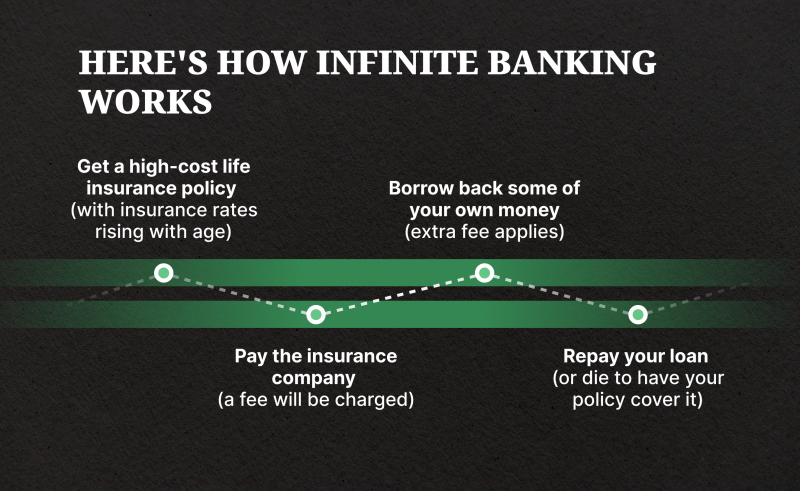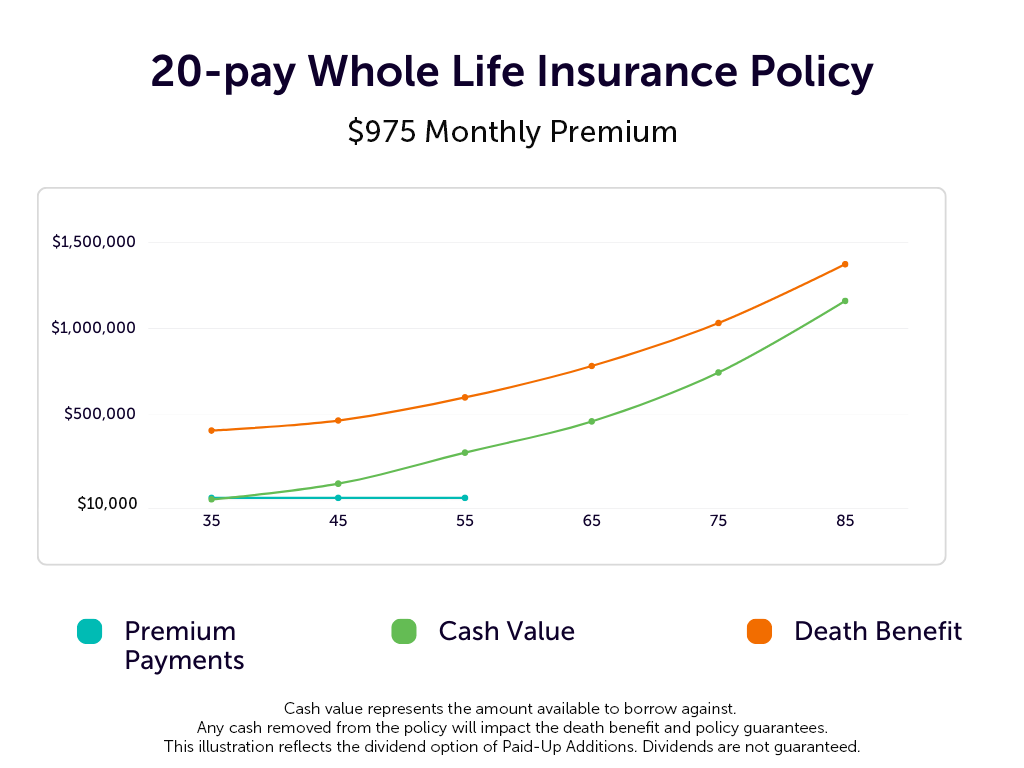All Categories
Featured
Table of Contents
Okay, to be fair you're truly "financial with an insurer" instead than "banking on yourself", however that concept is not as simple to offer. Why the term "infinite" financial? The concept is to have your cash operating in numerous locations at as soon as, rather than in a solitary area. It's a bit like the concept of buying a house with cash money, then borrowing versus your house and placing the cash to work in one more investment.
Some individuals like to speak about the "velocity of money", which generally suggests the same thing. In truth, you are just optimizing take advantage of, which functions, but, naturally, functions both methods. Truthfully, every one of these terms are scams, as you will certainly see listed below. But that does not indicate there is nothing rewarding to this principle once you get past the advertising and marketing.
The entire life insurance coverage market is afflicted by overly costly insurance, huge commissions, questionable sales practices, low prices of return, and improperly educated clients and salesmen. Yet if you wish to "Count on Yourself", you're going to have to fall to this market and in fact buy whole life insurance policy. There is no replacement.
The assurances intrinsic in this product are important to its feature. You can borrow versus a lot of sorts of cash money value life insurance policy, but you shouldn't "bank" with them. As you get an entire life insurance policy plan to "bank" with, remember that this is a completely separate area of your economic strategy from the life insurance coverage section.
As you will see below, your "Infinite Financial" policy truly is not going to dependably give this important economic function. An additional trouble with the truth that IB/BOY/LEAP counts, at its core, on an entire life policy is that it can make getting a plan problematic for numerous of those interested in doing so.
Whole Life Infinite Banking
Hazardous pastimes such as SCUBA diving, rock climbing, skydiving, or flying likewise do not blend well with life insurance products. That may function out great, considering that the factor of the policy is not the death benefit, but remember that getting a policy on minor kids is much more pricey than it should be given that they are generally underwritten at a "conventional" rate rather than a chosen one.

Most policies are structured to do one of two points. A lot of generally, plans are structured to make the most of the compensation to the representative marketing it. Negative? Yes. However it's the truth. The payment on a whole life insurance policy plan is 50-110% of the initial year's costs. Sometimes plans are structured to take full advantage of the survivor benefit for the costs paid.
The price of return on the plan is extremely essential. One of the ideal means to make best use of that variable is to obtain as much cash money as possible right into the policy.
The best way to improve the rate of return of a policy is to have a relatively tiny "base plan", and then placed more cash into it with "paid-up additions". With even more money in the policy, there is even more cash money worth left after the expenses of the fatality benefit are paid.
An additional advantage of a paid-up addition over a normal costs is that the compensation rate is lower (like 3-4% instead of 50-110%) on paid-up additions than the base policy. The much less you pay in compensation, the higher your rate of return. The rate of return on your cash money worth is still mosting likely to be adverse for a while, like all cash money worth insurance plan.
A lot of insurance policy companies only provide "direct recognition" loans. With a direct acknowledgment car loan, if you borrow out $50K, the dividend rate used to the money worth each year just uses to the $150K left in the policy.
Nelson Nash Net Worth
With a non-direct acknowledgment lending, the company still pays the exact same returns, whether you have "borrowed the cash out" (technically versus) the policy or otherwise. Crazy? Why would they do that? Who knows? They do. Commonly this function is coupled with some much less advantageous facet of the policy, such as a reduced dividend rate than you might get from a policy with straight recognition financings (infinity banca).
The business do not have a resource of magic cost-free cash, so what they give in one area in the policy need to be extracted from one more location. If it is taken from a feature you care less about and put right into a feature you care more around, that is a good point for you.
There is another essential function, normally called "laundry financings". While it is fantastic to still have rewards paid on cash you have actually obtained of the plan, you still need to pay rate of interest on that financing. If the reward rate is 4% and the lending is billing 8%, you're not exactly coming out ahead.
With a clean financing, your funding rate of interest rate coincides as the dividend price on the plan. While you are paying 5% rate of interest on the funding, that passion is completely offset by the 5% reward on the financing. In that respect, it acts simply like you took out the cash from a financial institution account.

5%-5% = 0%-0%. Same exact same. Thus, you are currently "financial on yourself." Without all 3 of these elements, this plan merely is not going to function effectively for IB/BOY/LEAP. The biggest concern with IB/BOY/LEAP is the individuals pressing it. Almost all of them stand to benefit from you buying into this idea.
As a matter of fact, there are lots of insurance representatives discussing IB/BOY/LEAP as an attribute of whole life that are not in fact marketing plans with the required features to do it! The trouble is that those that recognize the concept best have a huge dispute of passion and usually blow up the benefits of the concept (and the underlying plan).
Infinite Banking Book
You must compare borrowing versus your policy to withdrawing cash from your savings account. No money in cash money value life insurance. You can put the cash in the bank, you can spend it, or you can acquire an IB/BOY/LEAP plan.
You pay taxes on the interest each year. You can conserve some more money and put it back in the banking account to start to make interest again.
It expands for many years with capital gains, returns, leas, etc. Some of that income is strained as you accompany. When it comes time to buy the boat, you offer the investment and pay taxes on your long-term capital gains. You can save some more cash and acquire some more investments.
The money worth not used to spend for insurance coverage and compensations grows for many years at the dividend price without tax drag. It begins out with adverse returns, but with any luck by year 5 approximately has actually recovered cost and is growing at the dividend price. When you most likely to get the watercraft, you borrow against the policy tax-free.
Infinite Banking Concept Youtube
As you pay it back, the cash you repaid begins expanding again at the dividend rate. Those all job pretty in a similar way and you can compare the after-tax prices of return. The 4th alternative, nonetheless, works really differently. You do not save any type of money nor acquire any type of sort of investment for years.
They run your debt and give you a finance. You pay rate of interest on the obtained money to the financial institution until the loan is paid off.
Latest Posts
How To Be My Own Bank
Infinite Banking With Whole Life Insurance
How To Start A Bank: Complete Guide To Launch (2025)